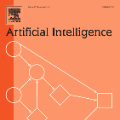Recently, newly developed Vision-Language Models (VLMs), such as OpenAI's o1, have emerged, seemingly demonstrating advanced reasoning capabilities across text and image modalities. However, the depth of these advances in language-guided perception and abstract reasoning remains underexplored, and it is unclear whether these models can truly live up to their ambitious promises. To assess the progress and identify shortcomings, we enter the wonderland of Bongard problems, a set of classic visual reasoning puzzles that require human-like abilities of pattern recognition and abstract reasoning. With our extensive evaluation setup, we show that while VLMs occasionally succeed in identifying discriminative concepts and solving some of the problems, they frequently falter. Surprisingly, even elementary concepts that may seem trivial to humans, such as simple spirals, pose significant challenges. Moreover, when explicitly asked to recognize ground truth concepts, they continue to falter, suggesting not only a lack of understanding of these elementary visual concepts but also an inability to generalize to unseen concepts. We compare the results of VLMs to human performance and observe that a significant gap remains between human visual reasoning capabilities and machine cognition.
翻译:暂无翻译





